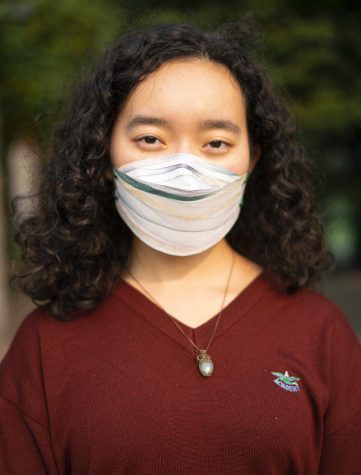Lost Communications: Seattle U’s COVID-19 Departmental Response
The smoke in the air was a plausible cause for Alex Takemoto’s sore throat, but to be sure, they took a COVID-19 test. Fifteen minutes later, Takemoto saw a positive result and contacted Seattle University’s designated email for COVID-19 reports, a sobering reminder that the pandemic is still affecting the Seattle U population.
The COVID-19 community level in King County is currently relatively low, and Governor Jay Inslee announced that the state of emergency in Washington will be lifted by the end of this month.
Thomas Dewey, assistant director of training development and operations at the Department of Public Safety at Seattle U, explained that since last year, the amount of COVID-19 cases on campus has lowered.
“The difference between now and January is night and day,” Dewey said.
There are a plethora of departments that respond to COVID-19 at Seattle U. Housing and Residence Life, the Student Health Center, Public Safety, the Office of the Dean of Students and Facilities are all contributors. Public Safety’s role, for example, focuses on COVID-19 data collection and pointing students to available resources.
“We are basically the shopping cart where the student comes and says ‘this is my experience, whatever it is, and we go ‘okay great, let’s get you some support and resources and help and get you pointed in the right direction,” Dominique Maryanski, interim director of public safety, said.
After testing positive, Takemoto interacted with multiple parts of the COVID-19 response network, which caused confusion about how to follow the isolation policy. They expected a response from the designated email for reporting positive COVID-19 cases, but after receiving no word for two hours, they called Public Safety. Takemoto explained that Public Safety got in contact with Housing and Residence Life, and acted as an intermediary between the two.
“[Public Safety] got back to me in five minutes, the school [reportation email] hadn’t emailed me back already.” Takemoto said. “Then they said ‘if you’re living on campus and have roommates, figure out isolation.’”

Seattle U’s current isolation policy requires students to self-isolate in their rooms for five to ten days. If the student is asymptomatic by day six, they can leave isolation but wear a respirator mask in public and avoid gatherings especially when someone medically vulnerable is present. If their symptoms aren’t resolved after the first five days, the student has to test negative twice or complete ten days of isolation.
Hilary Lichterman, director of housing and residence life, explained different ways students have isolated, mentioning that roommates might make the situation challenging.
“Many of our students, being wonderful community members, have taken that option if they have it available, to go somewhere in the local area or with family. If that’s not the case… many of our students are just self-isolating in space,” Lichterman said.
Takemoto expressed frustration regarding their experience, pointing out that they and other students have roommates who are at risk of being infected. They live with a roommate in a Chardin apartment, which has two rooms and no doors. After contacting their friends, they found out that someone with a Murphy triple, which has a door, had also tested positive, and quarantined there.
“I was lucky that I had friends in the Murphy’s that could house me, that wasn’t the original plan, the original plan was ‘place the tiny air filter that I had in the middle of the room, move the roommate I’m living with into the other room, and cross our fingers I wasn’t going to infect them,” Takemoto said.
Lichterman explained that there have only been a handful of cases with roommates in a double traditional room, and Housing has noticed many roommate pairings come to comfortable agreements with each other. Housing also has some additional spaces for students to isolate.
“We’ve tried to be very mindful to keep a couple beds. We still want to honor the demand that we have for housing, and we do still want students living with us, but we do have those extra few rooms, a very limited number,” Lichterman said.
Those extra spaces have not reached capacity.
“We have not turned any student away from any request, and we would work very very hard within every ounce of our ability to be creative and strategic because our student’s safety and well-being is our number one concern,” Lichterman said.
Takemoto wrote to The Spectator that they did not know about these available spaces until after their experience with COVID-19, and heard about them through word of mouth.
While having a wide array of departments available to respond to COVID-19 related challenges is helpful, it also can lead to loss of vital information and confusion for affected students. As Seattle U’s response continues to evolve, Takemoto and others hope to avoid frustrating roadblocks on their path to recovery.


